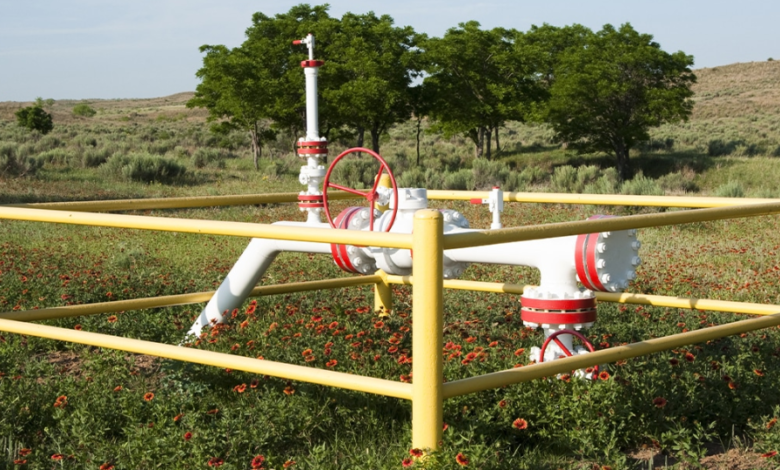Intrastate Pipelines: The Vital Arteries of State Energy Infrastructure

Energy infrastructure is one of the most important foundations of modern society, ensuring that homes, businesses, and industries have the power and resources they need. Within this complex network, pipelines play a critical role in transporting energy resources such as oil, natural gas, and refined fuels. While interstate pipelines often attract the most attention due to their cross-border nature, intrastate pipelines are equally significant.
Intrastate pipelines are those that operate entirely within a single state’s boundaries. They form the backbone of local energy distribution systems, connecting producers to refineries, storage facilities, utilities, and end-users. This article explores what intrastate pipelines are, their importance, how they operate, the challenges they face, and their evolving role in a sustainable energy future.
What Are Intrastate Pipelines
Intrastate pipelines are pipeline systems that remain entirely within a single state’s jurisdiction. Unlike interstate pipelines, which cross state lines and fall under federal regulation, intrastate pipelines are regulated primarily by state agencies, with some oversight from federal authorities for safety and operational standards.
These pipelines serve crucial local functions, ensuring that energy resources extracted, refined, or stored within a state can be efficiently delivered to consumers and industries without reliance on cross-border infrastructure.
Importance of Intrastate Pipelines
1. Local Energy Security
Intrastate pipelines provide states with a stable supply of energy resources. By keeping distribution within state borders, they reduce reliance on external infrastructure and ensure consistent delivery.
2. Economic Growth
Energy-intensive industries such as manufacturing, petrochemicals, and power generation rely heavily on intrastate pipelines for their operations. This creates jobs, attracts investments, and strengthens state economies.
3. Lower Costs
Transporting energy via intrastate pipelines is often cheaper than alternatives like trucking or rail. Cost savings are passed down to consumers and industries, making energy more affordable.
4. Flexibility
States can design intrastate pipelines to meet specific local needs, such as delivering gas to rural communities, connecting power plants, or supplying industrial hubs.
5. Emergency Resilience
Intrastate pipelines help states respond more effectively to supply disruptions by ensuring resources are accessible within their borders.
Functions of Intrastate Pipelines
Intrastate pipelines support a wide range of activities within state boundaries:
- Natural Gas Transmission: Moving gas from production sites or interstate connections to local utilities and power plants.
- Crude Oil Transport: Delivering oil from local wells to in-state refineries for processing.
- Refined Product Distribution: Supplying fuels like gasoline, diesel, and jet fuel to storage facilities and retail outlets.
- Industrial Support: Serving industries that require consistent, large-scale energy inputs.
- Utility Supply: Ensuring that natural gas reaches residential and commercial customers through local distribution systems.
Regulation of Intrastate Pipelines
Intrastate pipelines are primarily regulated at the state level, but they also adhere to federal safety standards. Key regulatory aspects include:
- State Public Utility Commissions: Oversee intrastate pipeline rates, tariffs, and service obligations.
- State Energy Agencies: Manage permits, construction approvals, and environmental compliance.
- Federal Pipeline and Hazardous Materials Safety Administration (PHMSA): Sets safety and operational standards that intrastate operators must follow.
This dual framework ensures that intrastate pipelines remain safe, reliable, and responsive to local energy needs.
Advantages of Intrastate Pipelines
- Efficiency: Intrastate pipelines are tailored to local supply and demand, reducing inefficiencies.
- Control: States have greater authority over the planning, operation, and expansion of these pipelines.
- Economic Value: They stimulate local economies by enabling businesses to access affordable energy.
- Reduced Transportation Risks: Compared to trucks or rail, pipelines reduce traffic congestion, accidents, and emissions.
- Support for Renewable Integration: Some intrastate pipelines are being adapted to transport renewable fuels, hydrogen, or captured carbon dioxide.
See also: Roof Light Windows UK: A Complete Guide to Brightening Your Home
Challenges Facing Intrastate Pipelines
Despite their importance, intrastate pipelines face several challenges:
Aging Infrastructure
Many existing pipelines were built decades ago and require upgrades to meet modern safety and efficiency standards.
Environmental Concerns
Pipeline projects often face scrutiny for their potential impacts on ecosystems, water supplies, and communities.
Regulatory Complexity
While states oversee intrastate pipelines, compliance with federal safety regulations can create overlapping requirements that complicate operations.
Public Perception
Opposition from communities concerned about environmental and safety risks can delay or block new projects.
Market Volatility
Fluctuations in oil and gas prices directly impact pipeline utilization and financial stability.
Technology in Intrastate Pipelines
Advances in technology are helping intrastate pipelines operate more safely and efficiently:
- Leak Detection Systems: Real-time sensors identify leaks quickly, reducing risks to communities and the environment.
- Automated Controls: Remote systems manage pressure, flow, and safety shut-offs.
- Pipeline Integrity Management: AI and data analytics predict maintenance needs and extend pipeline lifespans.
- Drone Inspections: Drones monitor pipeline routes, providing fast and cost-effective inspections.
- Smart Materials: Modern coatings and construction materials reduce corrosion and improve durability.
The Role of Intrastate Pipelines in Energy Transition
As the world transitions toward cleaner energy, intrastate pipelines are adapting:
- Hydrogen Transport: States are exploring modifications that allow pipelines to carry hydrogen, a key fuel in the low-carbon future.
- Carbon Capture and Storage (CCS): Intrastate pipelines may be used to transport captured carbon dioxide from industrial sites to storage locations.
- Renewable Gas: Pipelines can carry renewable natural gas (RNG) derived from agricultural or waste sources.
- Integration with Renewables: By delivering flexible natural gas supplies, intrastate pipelines complement intermittent renewable sources like solar and wind.
Economic Impact of Intrastate Pipelines
Intrastate pipelines contribute significantly to state economies:
- Job Creation: Construction, operation, and maintenance provide employment opportunities.
- Tax Revenues: States benefit from property taxes, permit fees, and corporate contributions from pipeline operators.
- Business Attraction: Reliable intrastate energy infrastructure attracts industries seeking affordable and stable energy.
- Consumer Savings: Efficient pipelines reduce energy costs for households and businesses.
Case Examples of Intrastate Pipelines
While every state has unique energy needs, intrastate pipelines commonly serve these roles:
- Texas: Extensive intrastate networks distribute natural gas from production fields to power plants, industries, and cities.
- California: Intrastate pipelines deliver natural gas to utilities and support clean energy initiatives.
- Midwestern States: Intrastate oil pipelines connect local wells to regional refineries, supporting agricultural economies.
These examples highlight how intrastate pipelines adapt to local conditions and requirements.
Future Outlook for Intrastate Pipelines
The future of intrastate pipelines will be defined by adaptability, sustainability, and modernization. Key trends include:
- Upgrading Infrastructure: States will continue investing in replacing aging pipelines with modern, safer systems.
- Decarbonization: Liquefied natural gas blending, hydrogen transport, and renewable gas will reshape intrastate pipeline operations.
- Digital Transformation: Greater reliance on automation, sensors, and data analytics will optimize efficiency and reduce risks.
- Public Engagement: Building trust with communities through transparency and safety commitments will become increasingly important.
- Integration with Federal Goals: Intrastate pipelines will play a central role in helping states meet renewable energy and emissions reduction targets.
Final Thoughts
Intrastate pipelines may not always make national headlines, but they are vital components of state-level energy infrastructure. By transporting natural gas, crude oil, refined fuels, and increasingly renewable resources, they ensure reliable supply, economic growth, and local energy security.
As the energy transition accelerates, intrastate pipelines are evolving to support cleaner fuels, advanced technologies, and sustainable practices. Their role in connecting producers, industries, and consumers within state borders will remain indispensable.
In short, intrastate pipelines are not just infrastructure — they are lifelines that sustain economies, communities, and progress within states, while also adapting to the demands of a cleaner, more resilient energy future.







